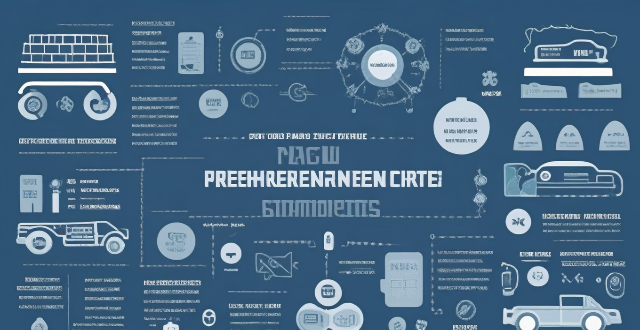The text provides a comprehensive explanation of how a car's infotainment system works. It discusses the hardware components, such as the central processing unit (CPU), display screen, audio output, connectivity options, and control interfaces. The software features include multimedia playback, navigation, smartphone integration, voice recognition, and internet connectivity. Additionally, the text explains user interaction methods such as touchscreen operation, physical controls, voice commands, and smartphone apps. Overall, the text highlights the integration of various technologies in modern cars to enhance convenience and safety for drivers and passengers.

How Does a Car's Infotainment System Work?
A car's infotainment system, also known as an in-car entertainment system or simply "infotainment," is a combination of audio and visual technology designed to provide drivers and passengers with a variety of information and entertainment options while on the road. These systems have become increasingly sophisticated over the years, integrating features like navigation, music playback, smartphone connectivity, and even internet access. Here's a breakdown of how these systems typically work:
Hardware Components
Central Processing Unit (CPU)
The CPU serves as the brain of the infotainment system, processing commands and running software applications. It handles tasks such as audio playback, touchscreen input, and Bluetooth connectivity.
Display Screen
A display screen acts as the interface between the user and the system. It can range from a simple LCD to a high-resolution touchscreen that allows for direct interaction with the system's features.
Audio Output
This includes speakers distributed throughout the vehicle to output music, navigation instructions, and other audio content. Some systems may also include a subwoofer for enhanced bass response.
Connectivity Options
Modern infotainment systems often include USB ports, auxiliary inputs, Bluetooth capabilities, and even wireless charging pads for devices. They may also support wireless technologies like Wi-Fi and 4G LTE for internet connectivity.
Control Interfaces
Controls can be physical buttons and knobs, touchscreens, voice commands, or even gesture control in some cases. The goal is to make it easy for the driver to access functions without being distracted from the road.
Software Features
Multimedia Playback
Most infotainment systems allow users to play music through various sources, including radio, satellite radio, CDs, MP3 files, and streaming services.
Navigation
Many systems incorporate GPS navigation, providing turn-by-turn directions and sometimes real-time traffic updates.
Smartphone Integration
Through Apple CarPlay or Android Auto, users can mirror their phone's interface onto the car's display, gaining access to contacts, messages, maps, and various apps.
Voice Recognition
Voice recognition technology allows drivers to interact with the system hands-free by issuing vocal commands. This can control music playback, make phone calls, and use navigation.
Internet Connectivity
Some systems offer internet connectivity, enabling features like online music streaming, real-time weather updates, and cloud-based app services.
User Interaction
Touchscreen Operation
Users interact directly with the system by touching the screen, similar to using a smartphone or tablet.
Physical Controls
Knobs, buttons, and switches are used for volume control, tuning radio stations, and other common tasks.
Voice Commands
Drivers can use predefined phrases or natural language processing to control various functions without taking their hands off the wheel or their eyes off the road.
Smartphone Apps
Certain infotainment systems come with companion smartphone apps that allow remote control of the car's infotainment features.
In summary, a car's infotainment system combines both hardware components and software features to create a seamless experience for drivers and passengers. As technology continues to advance, we can expect these systems to become even more integrated and intuitive, offering greater convenience and safety on the road.